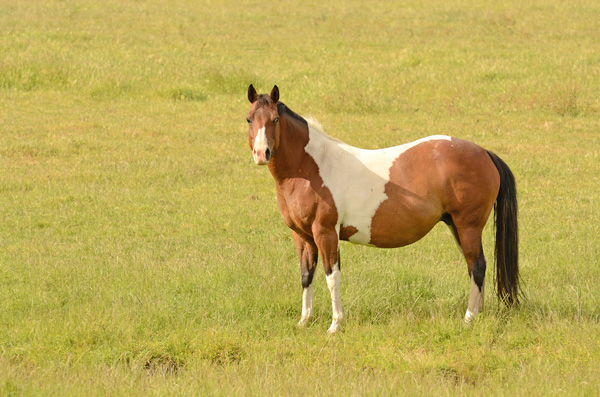
Monitoring your horse on a routine basis is good horsemanship, and it helps prevent simmering problems from getting out of hand. One important parameter to evaluate is musculoskeletal soundness. This can be done by watching the horse on a longe line or in a round pen doing trot circles both directions.
Using a video camera to document his gait periodically also provides a basis of comparison for times when you think something might be wrong.
First, it helps to know your horse’s normal movement and what that looks like when all is well. Then, when he seems a little bit off, you can appreciate the changes in the character and cadence of his gait. If all you can discern is that he is lame, yet you can’t figure out which leg, at least you have a starting point to know when it’s appropriate to get your veterinarian involved.
To help identify which leg is lame, watch the horse trot in circles both directions. Lameness can’t be differentiated at a canter, only at a trot. Trotting him on an asphalt surface may help you to hear a change in the footfalls–when the lame leg hits the ground, it’ll make a softer sound because he weights it less. Conversely, you will hear a louder footfall on the “sound” leg on the opposite side since it it taking on more of the horse’s weight.
Visually, when a lame front leg hits the ground and the horse feels pain, he usually lifts his head and elevates his shoulder to relieve loading on that limb. This is called a head bob, although not all lameness will be severe enough to elicit this much motion through the shoulder, neck and head. Ideally, you’ll want to identify a lameness problem before it becomes this obvious.
For a hind leg, watch the horse trot away from you on a straight line. Usually (but not always), the lame leg will have a hip hike with the hip on the sore leg elevated above the hip on the other good side. This results from the horse’s attempt to relieve pressure on the sore leg by getting off of it sooner. On circles, the lame rear leg might not make a full forward excursion so the horse may appear like he is stabbing or trailing the lame leg, or there may simply be a delay in his stride.
If your horse is lame and your veterinarian is in attendance, ask her/him to show you what they look for when judging lameness.
So, go outside and practice watching your horse travel in circles. The more you watch your horse and other horses, the better you’ll get at this important skill.


